DevOps have given tremendous acceleration to companies working in the IT industry. Also known as Development and Operation’s Collaboration, it delivers applications and software solutions at an extended pace. Whether we talk about enterprise software development or it’s just about cloud computing, the implementation of strategy and deployment help in scaling the various operations in the industry.
It only not focuses on completing things on a larger scale but also boosts dependability and availability in the system. However, there are plenty of times when companies fail to implement this strategy even after multiple attempts. Experts believe in using various practices for utilizing DevOps to enjoy its complete value.
In this post, we will give detailed information about how to implement DevOps in an organization to overcome the various challenges faced during its adoption. Go through the post to understand the complete concept briefly!
What is DevOps?
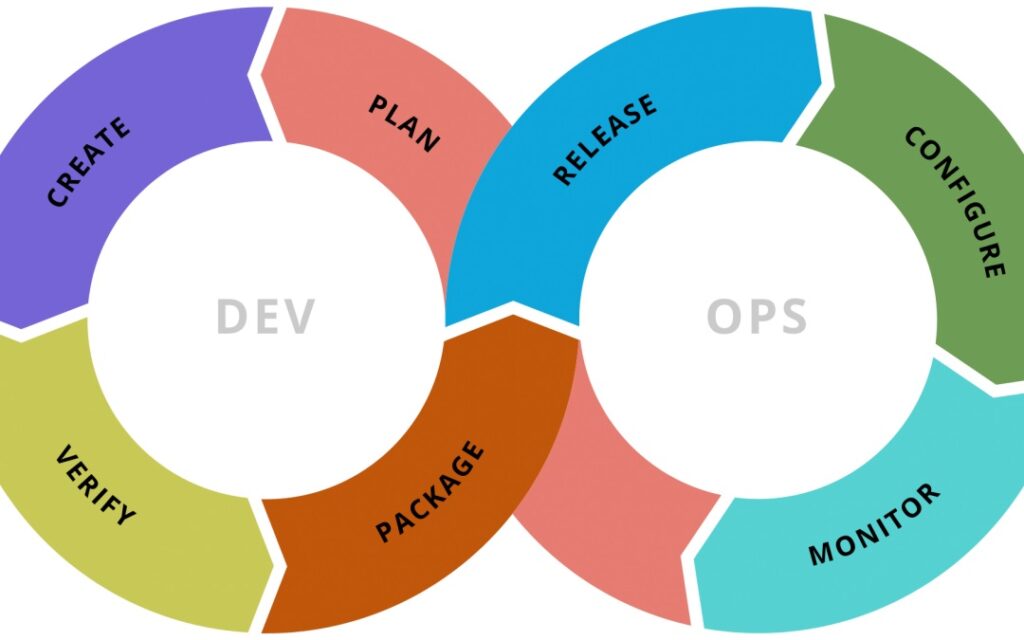
DevOps is a set of processes that mix the development and operations for improving a software system’s speed, agility, security, and efficiency. It was developed by Patrick Debois in 2009 to eliminate the gap between development and operational teams.
In addition to boosting efficiency, it makes collaboration and automation better. It is essential to understand success doesn’t come immediately with DevOps, whatever effort a company makes.
What are the Best Strategies for Implementing DevOps?
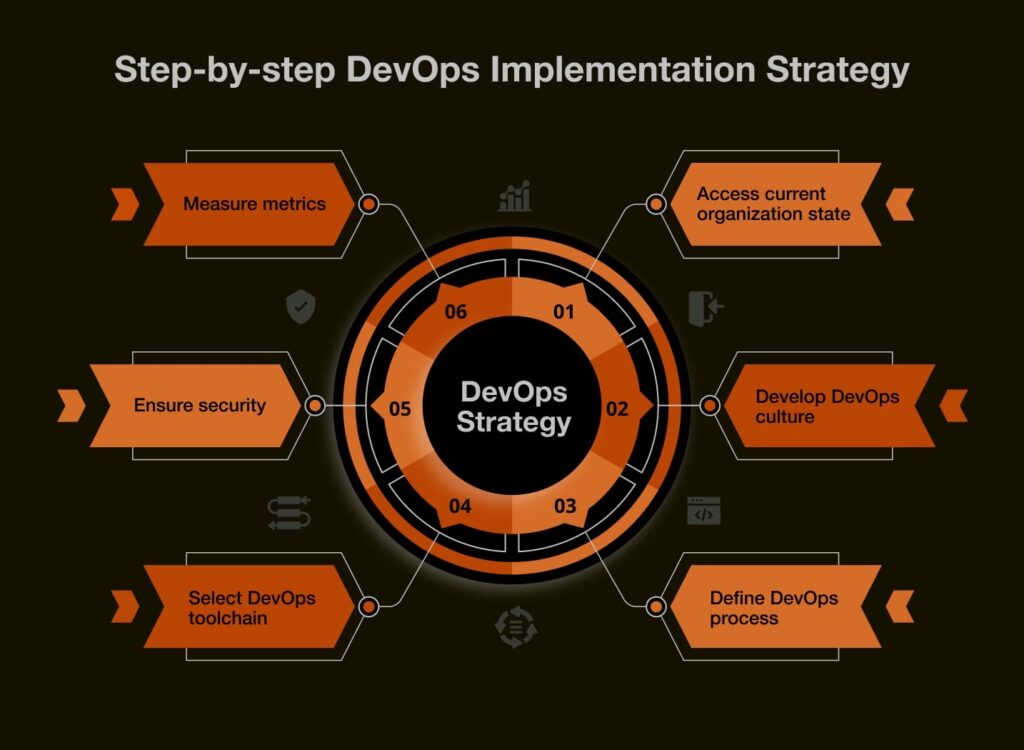
Although it has been more than a decade since DevOps was launched, the lack of not using proper strategies has caused the inadequate implementation of this technology. Let’s check a few best strategies to use for proper DevOps implementation below:
Beginning with a small group
It is strongly advisable to start with a small group rather than implementing it on a complete system. You need to understand that a company’s culture built over the years can’t be changed instantly. Implementing it with a small group will also assist in evaluating how things are going.
If it succeeds in a small group, the same procedure can be used for other departments in the company. It can be very helpful in achieving positive outcomes in the long run.
Making Communication Better
The next thing to do is to have an effective team communication system. The availability of proper communication and collaboration can create a bridge between development and operations. It is one of the most important DevOps implementation steps, allowing teams to respond instantly to any underlying issue.
Also, it lets the development teams make tremendous improvements in the company’s software system. Try to make as much as better communication for better results.
Utilizing the right tools
Businesses looking for an effective DevOps implementation strategy should always use a set of tools that offer required communication, agility, and automation to the system. Keep in mind that a single solution can’t manage everything needed for adopting this technology.
Every tool offers certain specialties that allow it to perform certain work. Having a combination of such tools can be greatly beneficial for adopting DevOps.
What are the major challenges faced during DevOps Implementation?
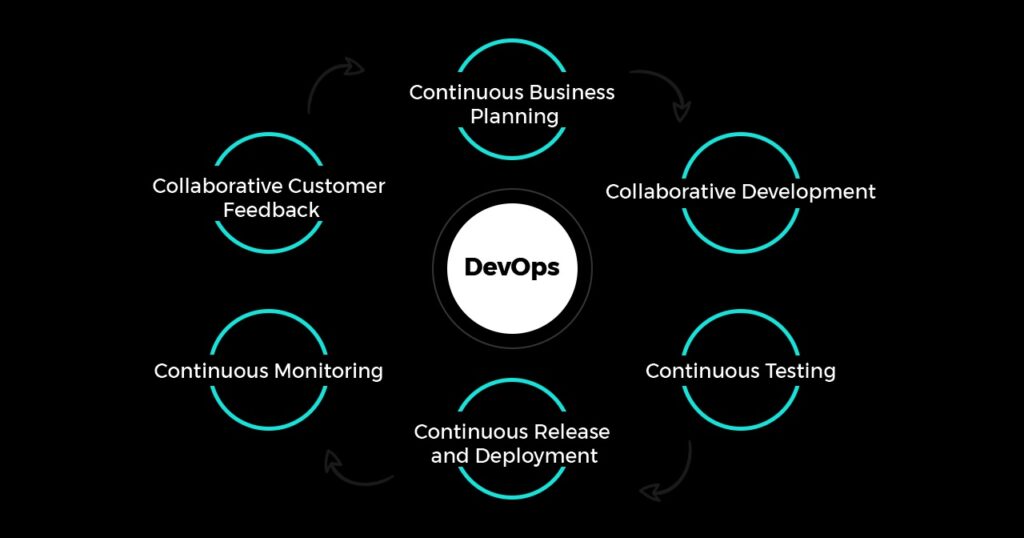
There is a great number of people who often have to face challenges while applying DevOps that are mentioned in detail below:
Transforming from Applications to Microservices
Although moving from legacy technology to newer microservices makes development and innovation quicker, it brings lots of complexity initially. A company needs to have the required configuration management and smart integration system for better implementation.
The availability of such tools assists in dealing with issues that developed during the adoption process and increased operational workloads.
Adopting New Tools and Integration
There is a variety of tools for performing development, deployment, and testing to make the DevOps implementation strategy effective. Ensure your team knows how to use these tools adequately for proper results.
Provide proper training to every team member to ensure productivity doesn’t get compromised. In simple words, all tools need to be adequately integrated without any trouble.
Governing DevOps
The third most common problem created during the DevOps adoption is how to govern its policies. It comes with the approach about the technique for giving access to production resources to every team member.
Trust us; it is a nightmare for organizations to understand the change control process and set up the entire system. Companies should check this perspective carefully for better results.
Dealing with Multiple Environments
When DevOps progressed to further stages, the level of complexity increased in the system demanding unique development for various environments. You need to understand that controlling multiple developments make the system complex.
If a company doesn’t have experts in this expertise, things could get uncontrollable sooner than later. That’s why, we suggest always looking for experienced experts to implement DevOps adequately.
How to adopt DevOps successfully- step-by-step process?
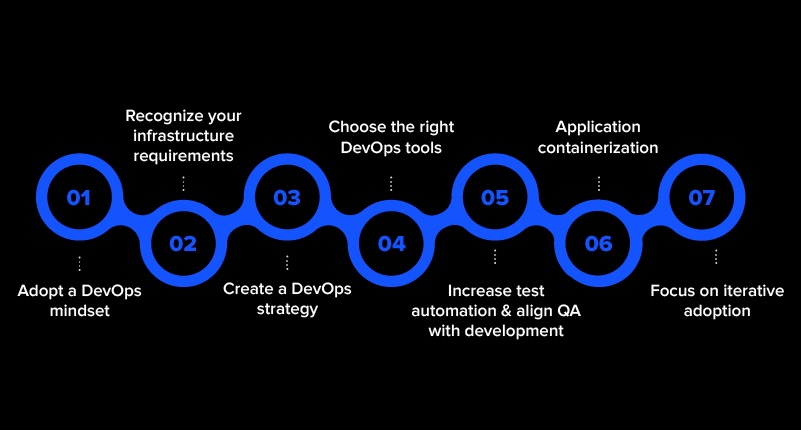
Have a look at a step-by-step guide that can assist in implementing DevOps successfully below:
Having a DevOps Mindset
If you believe DevOps can be just implemented by following the process, it isn’t possible in any manner. Every member of your team must have a mindset to adopt the changes.
Ensure everyone understands DevOps and how it can fulfil particular business needs. Always focus on proper cooperation and communication with everyone involved out there. Most companies think automating operations is enough to bring adequate benefits.
The ideal thing to do in such a situation is to ensure that everyone involved in the implementation process has a positive and innovative mindset. Explain important duties and responsibilities for creating a DevOps environment in the company.
Identifying the Infrastructure Needs
Every company has a distinct business structure that demands implementing this technology based on various factors. It is very critical to grab a deeper understanding of application’s requirements.
It will assist in connecting DevOps adoption with the company’s infrastructure, architecture, and goals. We strongly suggest identifying the delivery cycle and testing environments to know the areas needed improvement.
There is no chance of achieving success without integrating various processes into the workflow. It is extremely helpful for development teams to make system modifications to find and correcting faults quickly.
Following a Detailed DevOps strategy
The heads of every department should create a clear objective for bringing various team members together to make the adoption successful.
The DevOps implementation strategy should give every team member a sense of responsibility. It is based on practices promoting innovative practices for enhancing software development capabilities and testing procedures.
Always create a strategy that helps the team bring their best while smoothing the deployment procedure.
Read Also: What Is The Role Of DevOps In Mobile App Development?
Selecting the Right Tools
As we have already discussed in the above section, selecting the right tools is essential to adopt DevOps adequately. An ideal thing one can do is choose a suitable set of tools that fits the software delivery environment and applications in the company.
Access to appropriate tools assists companies in setting an effective DevOps framework that works for everything. It is very helpful for accomplishing a smooth process, ranging from development to cost optimization and seamless execution.
An appropriate set of tools help in enterprise-level automation to scale workflows and boost operations. Also, try to use tools that aid in the overall cloud computing integration and program integration capabilities of the company.
Boost test automation
There is a requirement for an appropriate automated testing system to achieve quicker delivery. However, it needs to understand that every test doesn’t require automation.
For example, functional testing only demands partial automation, while manual testing asks for security, usability, and investigative testing. So, go for the type of automation that suits the testing adequately.
Also, it is strongly recommended to align testing with development to prevent bugs. As a thumb rule, it is suggested to perform automated tests a couple of times every day during the development process.
Application Containerization
Application containerization is the latest technology created for changing the methodologies for testing and running applications in the cloud. Its main motive is to make the programs lightweight and ensure execution goes smoothly.
This process is incredibly useful for increasing the reliability of the software. On top of that, the container components make it independent of the broader infrastructure.
The presence of this process ensures the teams can conveniently manage the application in the DevOps adoption framework. They can easily make any adjustments needed for a particular microservice.
Targeting Iterative Adoption
A common mistake people make is beginning a comprehensive DevOps at the start of their operation. Go for a pilot application that combines various developers, operations personnel, and testers’ expertise to assess the value stream to find the bottlenecks and restrictions conveniently.
Calculate the growth followed by repeating the process. Don’t forget to go through various iterations to understand the framework better.
We suggest beginning the process by identifying the highest value-stream restrictions. Please keep in mind that a few restrictions might be simple to understand, whereas others will require tons of effort and time.
What are the benefits of DevOps culture?
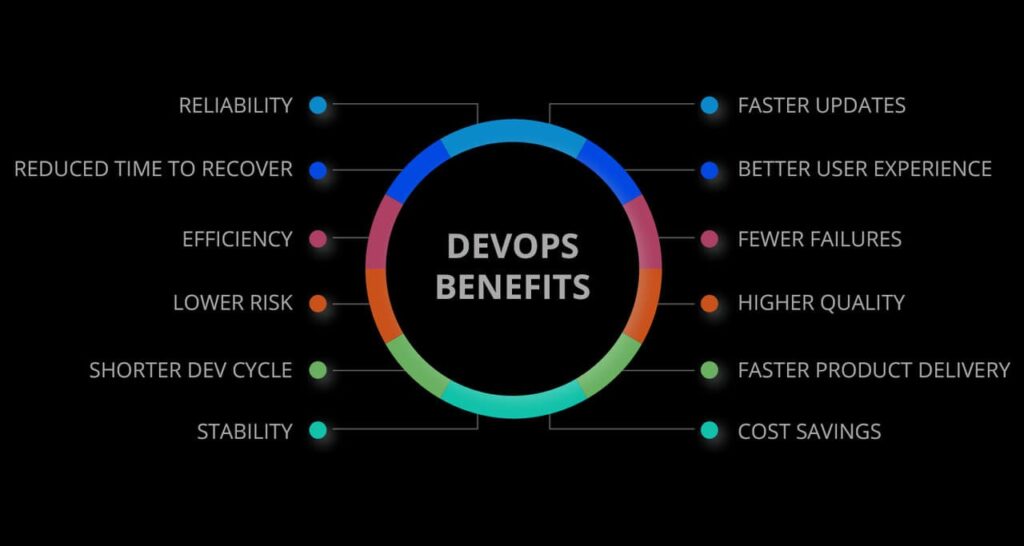
The exact advantages of DevOps depend on how much it improves the production environment by increasing the speeds of software. However, there are a few fundamental benefits offered by DevOps implementation we have mentioned below:
- It eliminates the institutionalized silos and handoffs that usually cause scalability and faster delivery troubles.
- A very exciting advantage of using a DevOps implementation strategy is that it unites the company’s various departments to make delivery quicker and more efficient.
- This set of processes also stabilizes the work environment by adding a balanced approach to the system.
- The majority of businesses that adopt DevOps find a significant boost in the agility of their business.
Conclusion
The power of software development can be greatly enhanced with the implementation of DevOps. It can be adopted very easily when performed by following a proper process. This technology ensures the delivery of software without any sacrifice in terms of quality.
Develop a DevOps strategy that is unique according to your organization’s goals. It is strongly suggested to follow a rigid approach that makes the implementation process smoother.
You must understand that DevOps is an ongoing process as it always keeps space for improvement. So, start as soon as possible to reach your business goals.
Q. Why should a business adopt DevOps?
A. The key reason to implement DevOps is to make the IT system quicker and better than the competitors moving ahead. It only enhances communication and creates a bridge between the company’s development and IT team.
Q. When to avoid the implementation of DevOps?
A. Adoption of this technology for enterprise software development should be avoided in the following situations:
- The latest releases aren’t required to fulfil the goals of the company.
- The architecture of the company doesn’t demand software upgrades.
- The majority of work is regulated.
Q. Which areas get the most affected by DevOps?
A. The main motive of this technology is to develop an environment that allows IT and development teams to interact and operate smoothly.
Q. What methodologies should be used with DevOps?
A. It should be developed by improving the collaboration between developers, customers, quality assurance, and product management to ensure a quick delivery.
Q. Can DevOps increase security in the system?
A. The integration between the company’s various departments that follow DevOps ensures better security across the various stages of the process chain.

